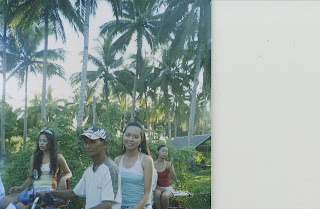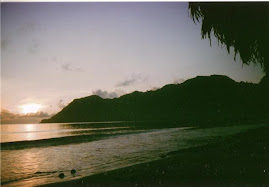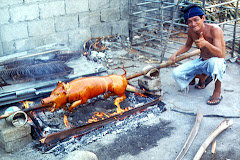

Running Man Resort

Monday, March 24, 2008
The province of Southern Leyte lies on the south section of the main island. Surrounded by Leyte on the north, Leyte Gulf on the east, Camotes Sea on the west, and Surigao Strait on the south. The islands of Panaon and Limasawa are under its jurisdiction.The birthplace of Christianity in Asia and the site of the first mass on March 31, 1521 was held in the town of Limasawa. On March 22, 1959, by the Republic Act No. 2227, the island of Leyte was divided into Leyte and Southern Leyte provinces.Southern LeytePeople from Southern Leyte are "Boholano" breed. They speak both language of Cebuano and Boholano. Most of the villagers are farmers and fisher folks and are recognized to be hardworking, religious and moderate people.Agriculture is the main source of livelihood. Coconut, abaca, rice, sugarcane and banana are the major crops. Hog fattening is the main focus in its livestock production while poultry business pervades with broiler production.The Spanish era church is a prominent keystone that brings glory to the Leyteños. The church is decorated with a magnificent altar and beautiful images of saints. A revelation of the continuing religiosity of its people.Southern Leyte is blessed with beautiful sites. The town of Limasawa is a diver's paradise, along with Padre Burgos, San Francisco and Pintuyan. For trekkers and climbers, Patag Daku in Libagon poses as a major challenge.Other tourist attractions include caves of Cagnitoan and Guinsohotan,Spring in Anahawan & Also The Famous Running Man Resort located in Tahusan Hinunangan,Privately owned by Hollywood Movie actor.Access to the province can be by boat or bus. Ferryboats and fast passenger jetboats go to/from Maasin to/from Cebu, Mindanao and Negros. Buses and jeepneys are available anytime if you want to explore around the town.FACTSRegion: 8 Capital: MaasinLand Area: 1734.8 sq. km. Number of Towns: 191. Anahawan 2. Bontoc 3. Hinundayan 4. Hinunangan5. Libagon 6. Liloan7. Limasawa8. Maasin9. Macrohon10. Malitbog11. Padre Burgos12. Pintuyan13. Saint Bernard14. San Francisco15. San Juan 16. San Ricardo 17. Silago18. Sogod19. Tomas Oppus
The Philippines is the third largest English speaking country in the world. It has a rich history combining Asian, European, and American influences. Prior to Spanish colonization in 1521, the Filipinos had a rich culture and were trading with the Chinese and the Japanese. Spain's colonization brought about the construction of Intramuros in 1571, a "Walled City" comprised of European buildings and churches, replicated in different parts of the archipelago. In 1898, after 350 years and 300 rebellions, the Filipinos, with leaders like Jose Rizal and Emilio Aguinaldo, succeeded in winning their independence.In 1898, the Philippines became the first and only colony of the United States. Following the Philippine-American War, the United States brought widespread education to the islands. Filipinos fought alongside Americans during World War II, particularly at the famous battle of Bataan and Corregidor which delayed Japanese advance and saved Australia. They then waged a guerilla war against the Japanese from 1941 to 1945. The Philippines regained its independence in 1946.Filipinos are a freedom-loving people, the country boasts ,multiple national television stations, hundreds of cable TV stations, and 2,000 radio stations. Filipinos are a fun-loving people. Throughout the islands, there are fiestas celebrated everyday and foreign guests are always welcome to their homes.
Sunday, March 23, 2008
Subscribe to:
Comments (Atom)

Running Man Resort

Running Man Picnic Cottages

Family Reunion Held in Running Man

Reunion Held in Running Man Resort

























